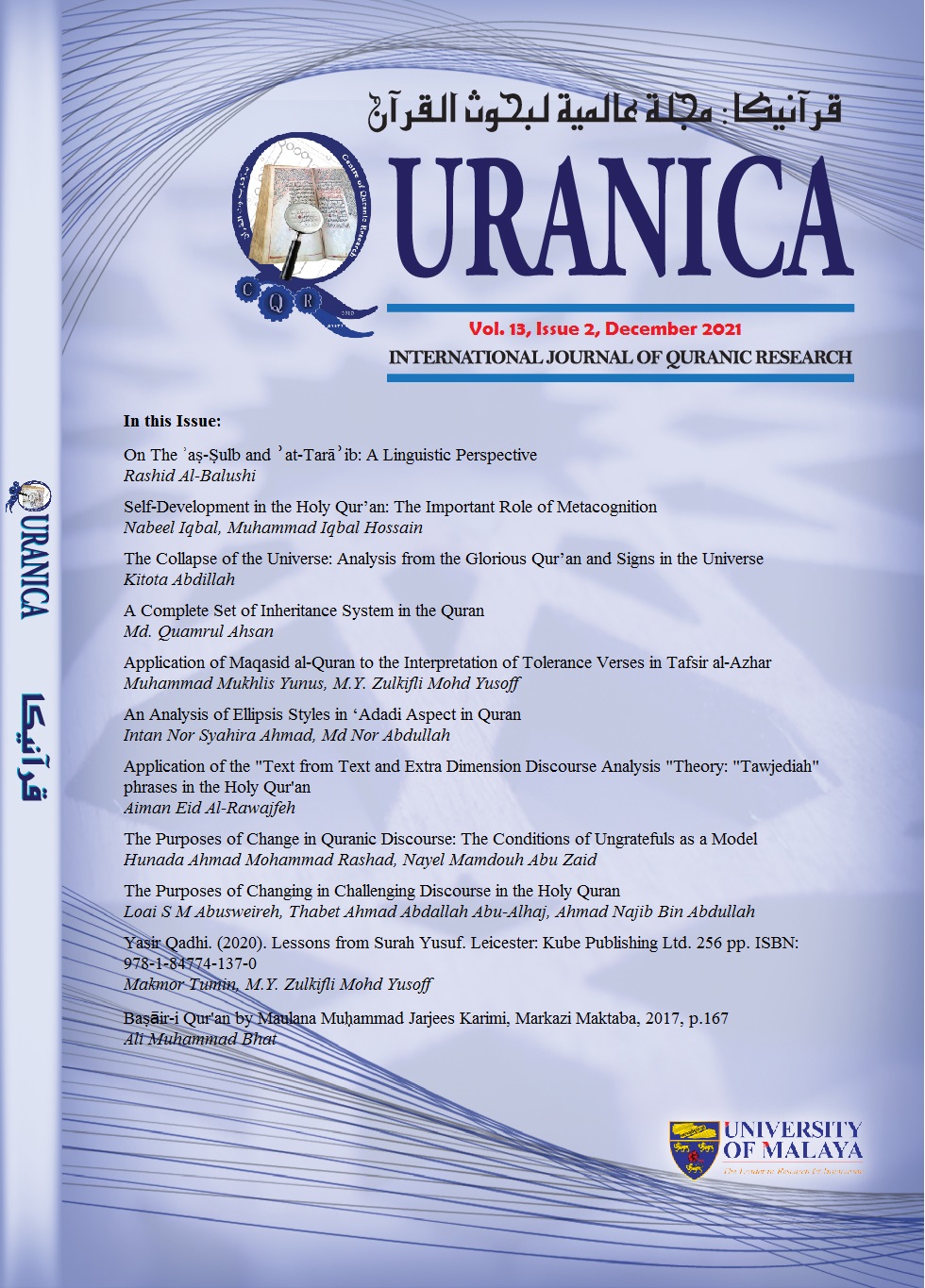The Purposes of Change in Quranic Discourse: The Conditions of Ungratefuls as a Model
Main Article Content
Abstract
The study has discussed the close relationship between the methods of rhetoric in the Holy Quran and the Quranic objectives by surveying the change in Quranic forms of address pertaining to the conditions and sayings of the repudiators, which establishes an original statute in Quranic interpretation through the lens of Quranic objectives. This study has brought to light the importance of indicatives and employing them to uncover Quranic objectives. The study aims to discover the purposes behind the changes in Quranic address and rhetoric observed across many verses. It also reveals the objectives behind the different styles of address and rhetoric which sheds light on interpretation through the lens of Quranic objectives. It also uncovers the importance of language in identifying these purposes and ensuring constant alignment with them. The researcher has adopted an analytical methodology as well as a topical one in analyzing the indications behind terms included in the address of ignominy towards repudiators, and the address of one to many to understand the implication of the change in address and how it reflects upon Quranic objectives. Several conclusions were reached, a couple being: Linguistic interpretation protects interpretation through Quranic purposes from inexperienced intruders, who (like many others preceding them) result in an erroneous tangent of misinterpretation.
Downloads
Article Details
Disclaimer
QURANICA makes every effort to ensure the accuracy of all its contents. However, opinions, discussions, views and recommendations are expressed in this journal do not necessarily reflect the official policy of QURANICA or views of its editors or publishers. Therefore, QURANICA and its publishers will not be liable for any controversy may be arisen. The journal reserves the right, at its sole discretion, to change its terms and conditions of publications.
Copyright
It is a condition of publication that manuscript submitted to the journal have not been published, accepted for publication, nor simultaneously submitted for publication elsewhere. By submitting a manuscript, the author(s) agrees that copyright for the article is transferred to the publisher, if and when the manuscript is accepted for publication.
